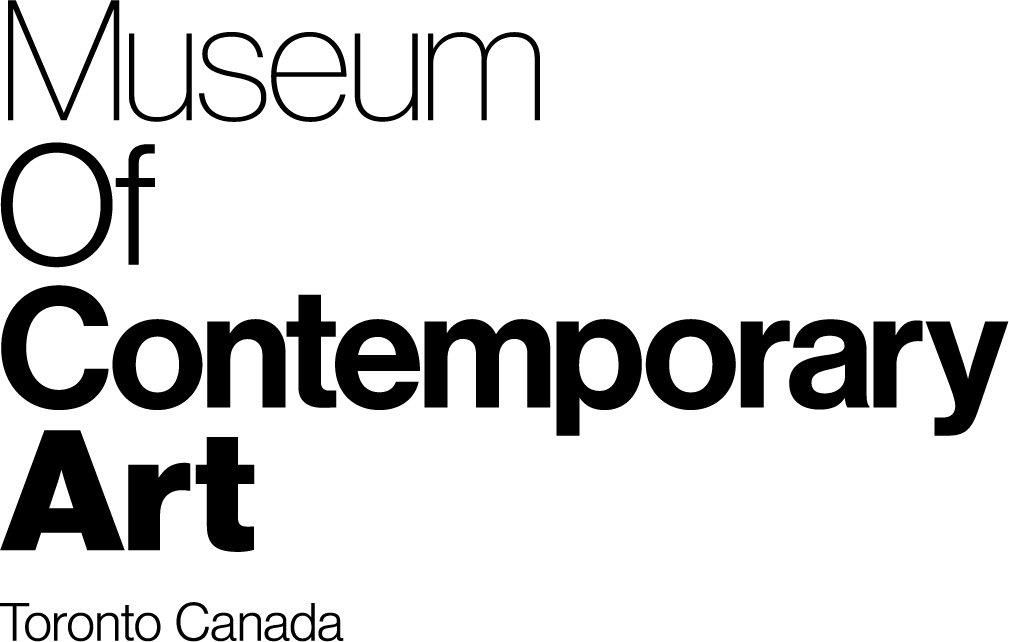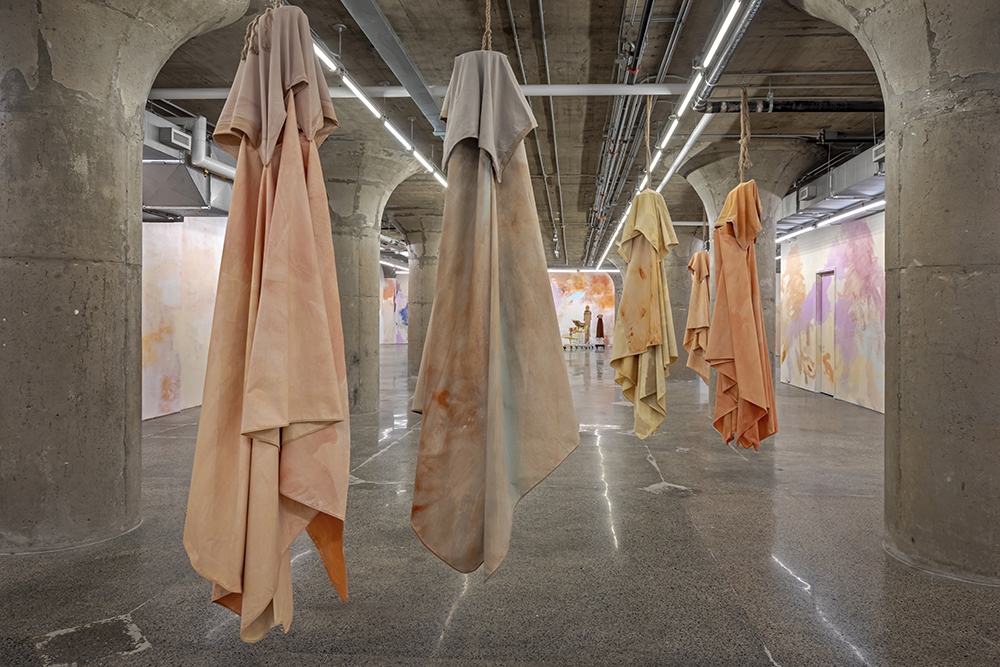On an entire floor of MOCA Toronto, artist Megan Rooney has constructed an atmosphere that sucks you in with its gentle pastel hues, but within minutes it becomes clear that not everything is OK here. There are eerie fabric sculptures suspended from the ceiling, and a shopping cart with an empty baby seat. Other arranged objects include road traffic control devices like orange cones, flashers, and metal crowd control barricades. Rooney’s deceptive, rose-tinted world was designed as a set for live performances that have been postponed in light of current distancing measures.
I spoke with Megan before the measures had been enforced and we imagined the installation activated by performance, and discussed her approach to murals and the ghostly quality of her work.
Anna Kovler: You had a whole floor to work with at MOCA. What was it like working with that space?
Megan Rooney: The space was really generative for me because performance was such a big part of it. I wanted it to be conducive to having dance and movement and sound as these other elements that build towards the bigger gesture. The space is full, but also sparsely installed so that the performance could settle into that space. I wanted to trace the whole space with murals, because at MOCA you really get dropped into the space, with that elevator you really have that arrival feeling. A lot of the choreography was made as a response to the columns giving you a path-like movement through the space.
AK: What are these fabric sculptures hanging from the ceiling about?
MR: I was really thinking about the materials I’m using and what they evoke. Those sculptures are made from patio umbrellas, but they’ve had the inner mechanism removed. They’re hanging from ropes which are actually children’s playground climbing ropes, and colored with faded pastel colors like slightly moldy, sun-scorched patio umbrellas. There is definitely a feeling of unease that something bodily is hanging from the ceiling. I was influenced by a trip to a catacomb where the skeletons were still clothed; it was quite surreal. It’s interesting to me that people have different reads of the work. Some find it grotesque but others read it as playful and ghostly. Those sculptures get activated; they move around and swing during the performance. I want them to feel that at any moment they can pick up and blow away.
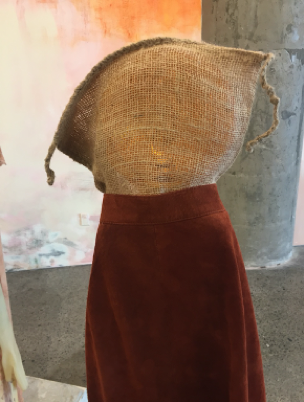
Megan Rooney. Installation view, “HUSH SKY MURMUR HOLE” at MOCA Toronto, 2020.
AK: Where do you find your influences?
MR: I find a lot of my references come from the kinds of landscapes I find myself in, whether urban or suburban. I’m always trying to process materials to transform into something new. With my murals, I want to give the viewer something temporary that isn’t directly linked to a commercial objective. You come and see them, but you know they’re going to disappear.
AK: How do you choose what kind of paint to use for your murals?
MR: I use house paint, mixed with oil stick and pastel and some other acrylic paint, mostly regular water-based paint. Then I remove paint with a power sander, so I deposit colors, then I cover them up, then I go hunting and looking for the colours underneath with a big industrial power sander. I use big brushes, sponges and rags. Some of the fabric in the sculptures was actually used in the process of making the mural. I use them on the walls first and they get soaked and full of paint. I actually think of all my sculptures as paintings.
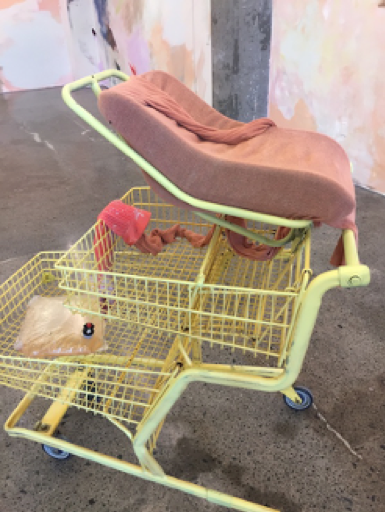
Megan Rooney. Installation view, “HUSH SKY MURMUR HOLE” at MOCA Toronto, 2020.
AK: Are there any specific political issues you are influenced by at the moment?
MR: There are, but I want the sculptures to function in a multi-layered way where at first glance you think they’re friendly, with the shopping cart and baby carriage… but then you start to think there is something more sinister at play. I am concerned with the global swing towards conservative, right wing policies and the resurgence of attacking the female body (which never completely disappeared but seems more prevalent at the moment.)
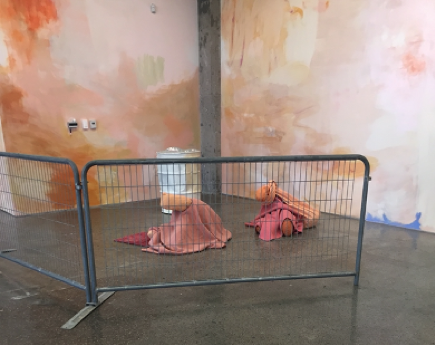
Megan Rooney. Installation view, “HUSH SKY MURMUR HOLE” at MOCA Toronto, 2020.
AK: I’m really struck by these two soft sculptures tucked in the corner behind crowd control gates. They look sad and vulnerable.
MR: I was thinking about these sculptures and the border crisis in America was on my mind, with humans in cages being contained in modern day, pen-like prisons. This was highly alarming and disturbing to me and I became curious if that kind of behaviour was normalized from other places like in the home putting kids in these playpens to keep them from going in the kitchen. We have this political system which has justified a different kind of “pen” that is obviously inhumane and cruel, and I wanted it to read on this level of unease, that it can potentially come in various forms.
Although the Museum of Contemporary Art is temporarily closed, Megan Rooney’s work can be viewed online on various platforms.
